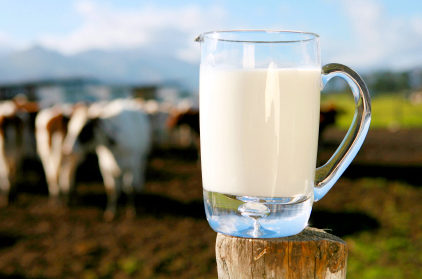CRAFTSBURY — For hundreds of years raw milk has been a part of Vermont’s agricultural tradition. It’s recognized for its health, economic, and environmental benefits.
“My milk is produced for human consumption, not pasteurization,” Frank Huard, of Huard Family Farm in Craftsbury said.
The majority of milk produced in Vermont is shipped from large dairy farms to dairy co-ops and distributors for retail sale. But, there are still farmers who sell raw milk, which is unpasteurized, directly to customers.
A report from Rural Vermont which came out earlier in the week sheds new light on the raw milk debate. The report not only provides a snapshot of raw milk production and sales across the state, but it looks at what is working and what is not working with the current Raw Milk Law.
Because Vermont law doesn’t require those who sell raw milk to register with the state, it’s impossible to get an exact total of the amount produced or sold. However, the report shows that in a 12-month period, 2,000 customers bought more than 53,000 gallons of raw milk. This demonstrates that the production and sale of raw milk enables many Vermont farms to be more economically sustainable as they contribute to a growing community-based food system.
Frank Huard has been working hard to educate people as to the health benefits of raw goat milk. Frank is an expert in the field, and his farm was just awarded top quality goats’ milk at the Vermont Farm Show last Thursday. It’s the third time that they have been given the award.

Huard explained that when it comes to buying raw milk, it’s important to know the farmer. You want to be sure that you’re buying a quality product. His goats’ milk is tested twice per month at a state lab.
The current law allows him to sell his product, but only if the customer comes to his farm to purchase it, or if he delivers it himself. Farmers are kept from selling raw milk at farmers markets, which the Rural Vermont report shows is something that needs to be addressed.
“What reason do we have to limit the access people have to certain products?” Huard asked.
One of the questions Rural Vermont asked in the study was if farmers stopped selling raw milk, what was the reason? One of the most common responses was “the farm is too far off the beaten path for customers to travel.”
It seems the current law is making it difficult for consumers to have easy access to raw milk, which in turn makes it harder for the farmers to reap some of the economic benefits that are available to them in the market. The demand is there but the supply is being cut off.
Huard said he understands that producers will not be allowed to sell their products at large grocery stores anytime soon, but at the very least he feels he should be allowed into health food stores and farmers markets.
Raw goat milk is the closest milk to the milk produced by a nursing mother. Many of Huard’s customers purchase the raw milk for their babies. Because it is naturally homogenized, it doesn’t upset their stomach.


